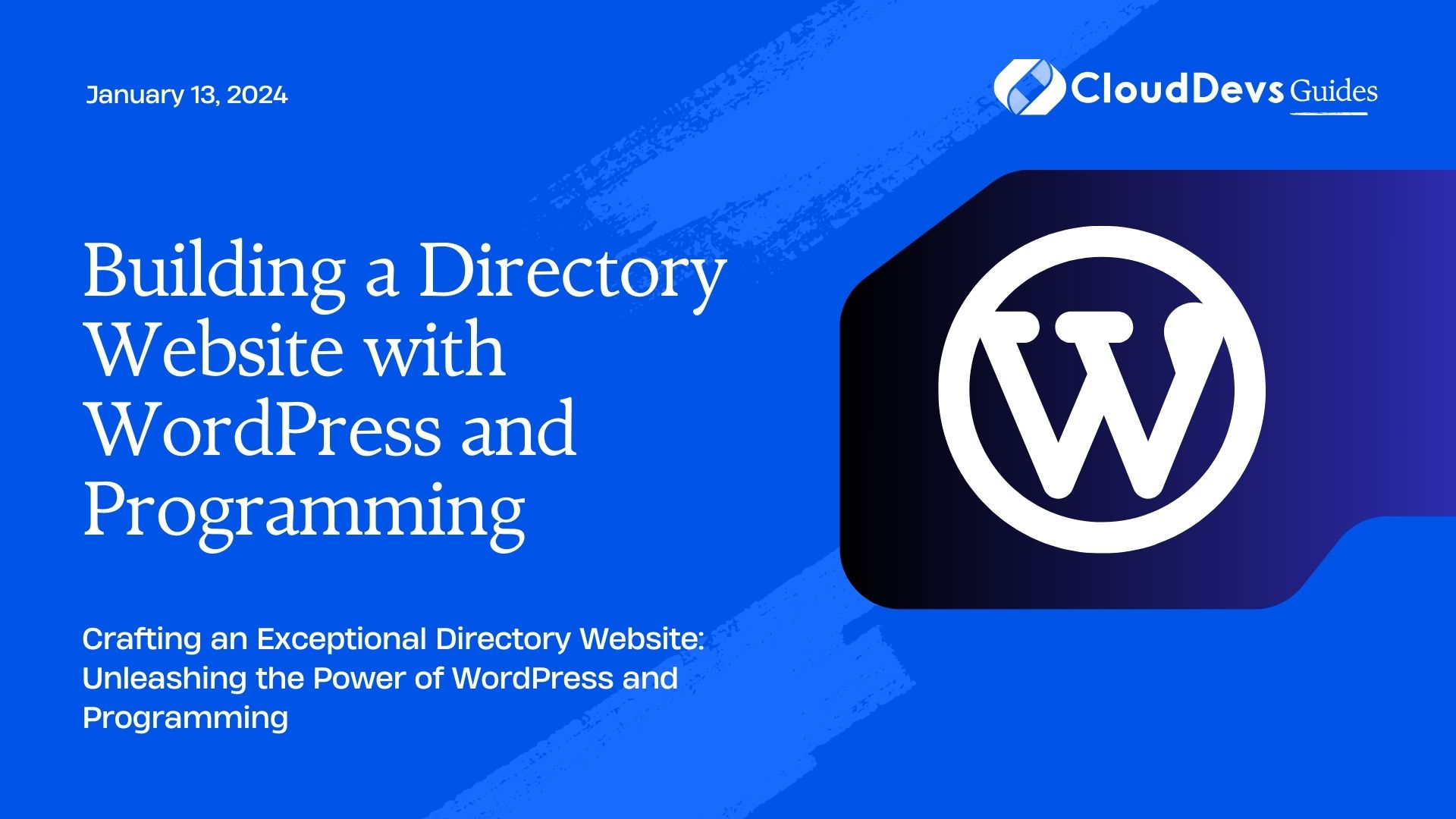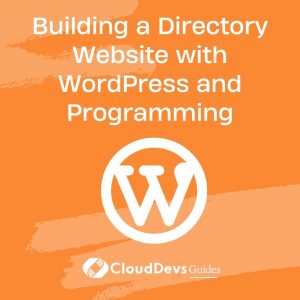Building a Directory Website with WordPress and Programming
In the digital age, online directories have become an essential tool for connecting users with businesses, services, and information. Whether it’s a local business directory, a job portal, or a niche-specific listing, building a directory website can be a lucrative endeavor. While platforms like WordPress offer user-friendly interfaces for website creation, incorporating programming techniques can significantly enhance the functionality and customization of your directory. In this guide, we will explore how to build a feature-rich directory website using WordPress and programming, providing you with the tools to create a site tailored to your vision.
Table of Contents
1. Setting Up Your WordPress Directory Website
1.1. Choosing a Hosting Provider and Domain Name
Before delving into the technical aspects, you need to select a reliable hosting provider and a suitable domain name. A good hosting provider ensures your website’s speed, security, and uptime, while a memorable domain name makes it easier for users to find your directory.
1.2. Installing WordPress
Most hosting providers offer a simple one-click WordPress installation process. Once installed, you can access your WordPress dashboard, which serves as the control center for your website.
1.3. Selecting a Directory Theme
WordPress offers a variety of themes, many of which are specifically designed for directory websites. Choose a theme that aligns with your website’s purpose and design preferences. Some popular directory themes include Listify, DirectoryEngine, and ListingPro.
2. Structuring Your Directory with Custom Post Types
WordPress utilizes a system called “custom post types” that enables you to create content with distinct attributes beyond regular posts and pages. In the context of a directory website, you can use custom post types to differentiate between different types of listings, such as businesses, events, or job listings.
2.1. Creating Custom Post Types with Code
To create custom post types, you can leverage your programming skills by adding code to your theme’s functions.php file or by creating a custom plugin. Here’s an example of how you might create a custom post type for “Businesses”:
php
function create_business_post_type() {
register_post_type('business',
array(
'labels' => array(
'name' => __('Businesses'),
'singular_name' => __('Business'),
),
'public' => true,
'has_archive' => true,
'supports' => array('title', 'editor', 'thumbnail'),
)
);
}
add_action('init', 'create_business_post_type');
This code snippet defines a custom post type called “Businesses” with appropriate labels and support for a title, editor, and thumbnail image.
3. Implementing Advanced Search Functionality
A key feature of directory websites is the ability for users to search for specific listings based on various criteria. Implementing an advanced search functionality requires a combination of WordPress plugins and programming.
3.1. Choosing a Search Plugin
There are several plugins available that can enhance your directory’s search capabilities. “FacetWP” is a powerful plugin that allows you to create advanced search filters with checkboxes, dropdowns, and more.
3.2. Customizing Search with Code
To further tailor the search functionality, you can use code snippets to modify the behavior of your search forms and results. For instance, you might want to change the default search behavior to prioritize specific custom fields, such as location or category.
php
function custom_search_filter($query) {
if ($query->is_search && !is_admin()) {
$query->set('post_type', array('business')); // Limit search to the 'business' post type
// Additional customizations can be added here
}
return $query;
}
add_filter('pre_get_posts','custom_search_filter');
4. Enabling User-Generated Content
Allowing users to submit their own listings can significantly enrich your directory. Implementing user-generated content requires user registration, submission forms, and a moderation system.
4.1. User Registration and Submission Forms
You can use plugins like “WPForms” or “Gravity Forms” to create user-friendly submission forms. To enable user registration, navigate to WordPress Settings > General and check the “Anyone can register” box.
4.2. Moderating Submissions
To maintain the quality of your directory, consider implementing a moderation process for user-generated content. This can involve manually reviewing and approving each submission or using a plugin to automate the moderation process.
5. Enhancing User Experience with Geolocation
Integrating geolocation features can help users find listings that are relevant to their location. This is especially useful for location-based directories or apps.
5.1. Geolocation Plugins
WordPress offers plugins like “GeoDirectory” and “WP Store Locator” that enable geolocation functionality. These plugins can automatically detect users’ locations and display relevant listings.
5.2. Customizing Geolocation with Code
For more control over geolocation features, you can utilize code to create custom maps, distance calculators, and location-based search filters.
php
function add_location_filter() {
if (is_post_type_archive('business')) {
// Add location filter based on user's IP or selected location
}
}
add_action('pre_get_posts', 'add_location_filter');
6. Monetizing Your Directory
If you’re looking to monetize your directory, there are various strategies you can employ:
- Paid Listings: Offer premium listing options to businesses or service providers, allowing them to stand out from the crowd for a fee.
- Advertisements: Integrate advertising banners or Google AdSense to generate revenue from your website’s traffic.
- Membership Plans: Implement membership tiers that grant users access to exclusive features or listings in exchange for a subscription fee.
Conclusion
Building a directory website with WordPress and programming allows you to create a dynamic platform that serves the needs of both users and businesses. By combining the flexibility of WordPress with the power of programming, you can craft a directory that stands out in terms of functionality, customization, and user experience. Whether you’re creating a local business directory, an events portal, or a niche-specific listing, the steps outlined in this guide provide a solid foundation for your project. So, roll up your sleeves, unleash your creativity, and embark on the journey of building your own directory website.
Table of Contents








